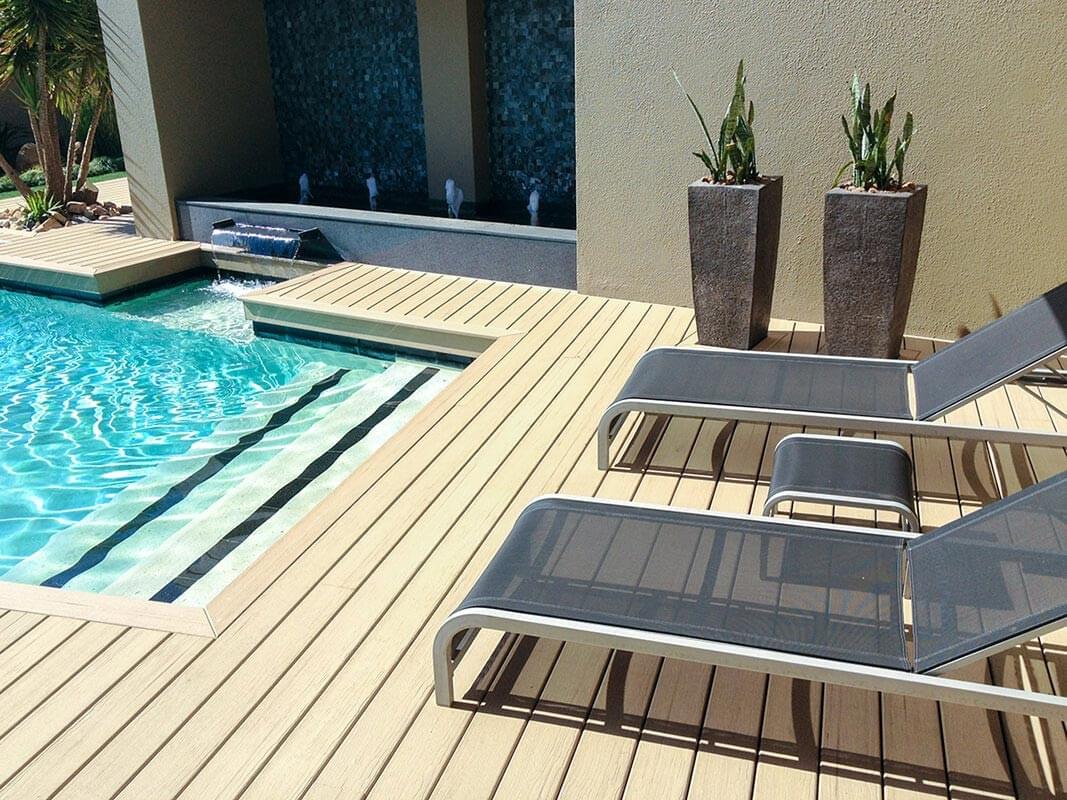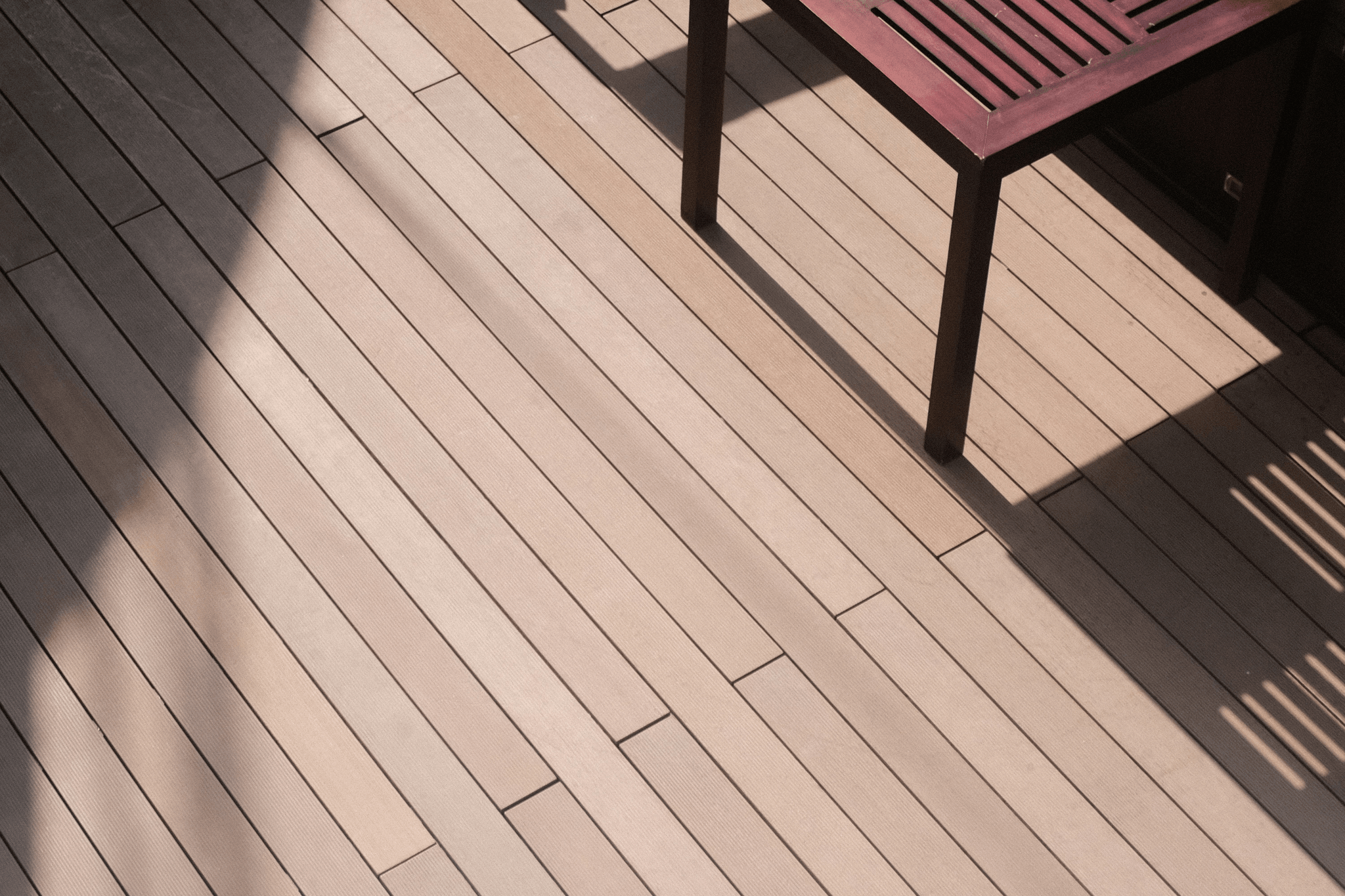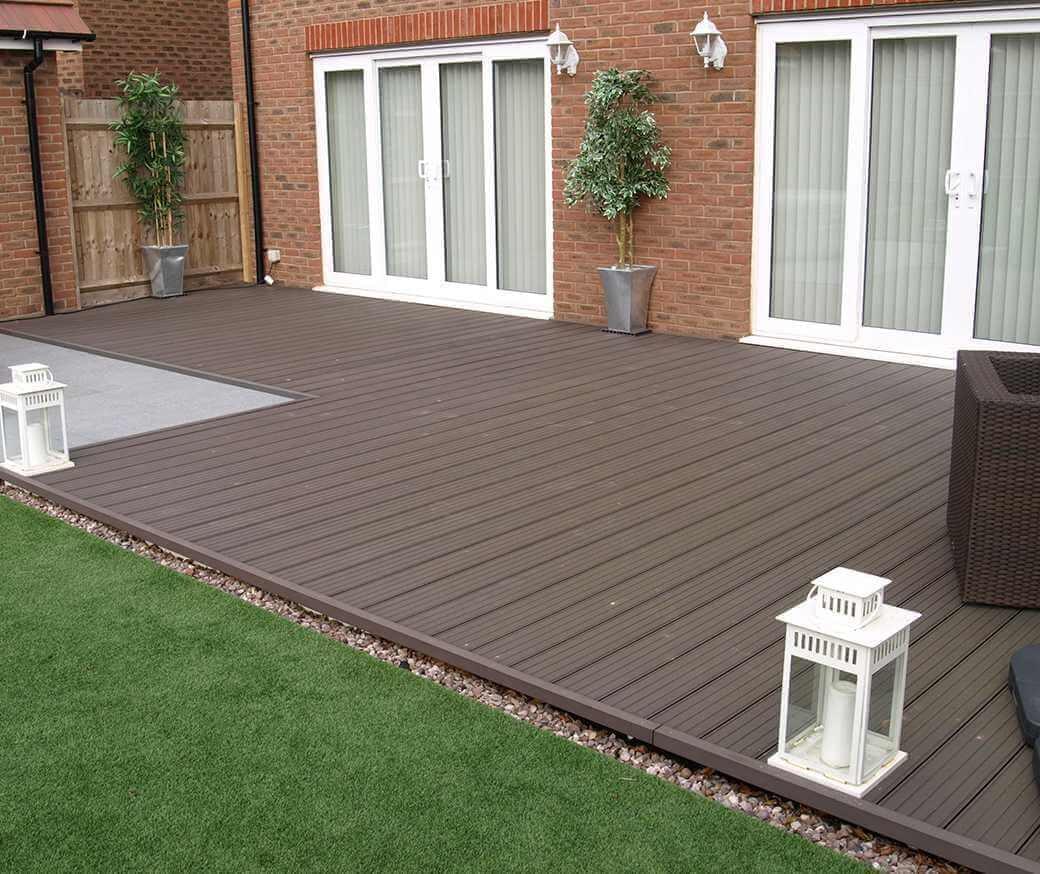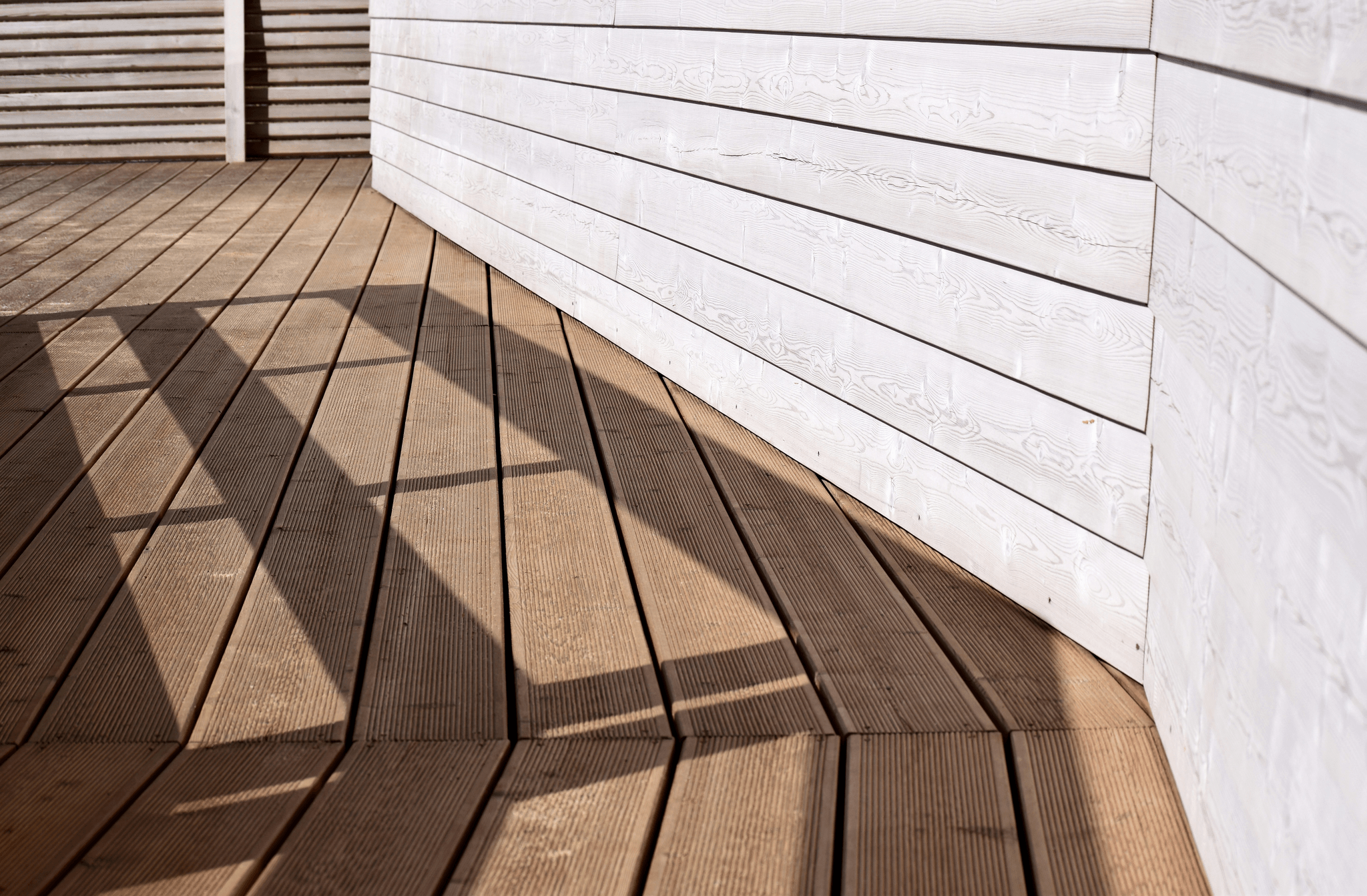Introduction
In recent years, the construction and landscaping industries have experienced a significant shift towards innovative materials, with wood plastic composite (WPC) leading the charge. This versatile material has gained popularity for its unique blend of durability and aesthetic appeal, making it a go-to choice for various applications. Understanding what is WPC material is essential to appreciate its transformative impact on outdoor spaces.
Understanding WPC Material Essentials
Wood plastic composite is essentially a hybrid material that combines wood fibers and plastic to create a product that mimics the look of solid wood while offering enhanced performance characteristics. The composition of WPC allows it to resist common issues associated with traditional solid wood, such as rotting and warping. By utilizing both recycled wood material and high-density polyethylene (HDPE), WPC presents an eco-friendly alternative that doesn’t compromise on style or function.
The Rise of Composite Decking
The rise of composite decking can be attributed to several factors, including its low maintenance requirements and long-lasting nature compared to traditional decking options made from solid wood. Homeowners are increasingly seeking materials that not only elevate their outdoor aesthetics but also withstand the test of time without constant upkeep. As awareness grows around sustainable building practices, more people are opting for wood plastic composite decking as a responsible choice for their outdoor projects.
Key Advantages of WPC
The advantages of using WPC in various applications are numerous and compelling. First off, its durability means it can withstand harsh weather conditions without fading or deteriorating like traditional wood materials might do over time. Additionally, the low maintenance requirements—no need for sanding or staining—allow homeowners to enjoy their spaces without the hassle often associated with solid wood products, making it an ideal choice for busy lifestyles.
What is WPC Material?

If you've ever wondered, What is WPC material? you're not alone. Wood Plastic Composite (WPC) is a modern marvel in the world of construction and design, combining the best attributes of wood and plastic to create a versatile material that’s taking over outdoor spaces. This innovative product is primarily made from a blend of recycled wood fibers and thermoplastics, resulting in a robust solution for various applications.
Definition and Composition
Wood Plastic Composite decking is defined by its unique composition, which typically includes around 50% wood fibers and 50% plastic materials. This combination not only enhances the structural integrity but also provides resistance to moisture, decay, and pests—issues that plague solid wood products. The result? A durable alternative that maintains the aesthetic appeal of traditional wood while offering superior performance.
Comparison with Solid Wood
When comparing WPC to solid wood, several key differences emerge that make WPC an attractive option for many homeowners and builders alike. While solid wood boasts natural beauty and warmth, it often requires significant maintenance to prevent warping or rotting over time; enter decking wood plastic composite! With its low maintenance requirements and excellent durability, WPC stands out as an ideal choice for outdoor applications where exposure to the elements can wreak havoc on traditional wood materials.
Common Misconceptions
Despite its growing popularity, there are still misconceptions surrounding what is WPC material that can deter potential users from embracing this innovative option. Some people mistakenly believe that all composites look artificial or lack the charm of real wood; however, advancements in technology have allowed manufacturers to produce highly realistic finishes that mimic natural grains beautifully. Another common myth suggests that WPC lacks strength compared to solid wood; in reality, well-engineered composites can outperform traditional lumber in terms of durability and longevity.
Top Applications of WPC

Wood Plastic Composite (WPC) has emerged as a versatile material that finds its way into various applications, thanks to its unique properties. From residential to commercial settings, WPC is redefining how we think about traditional materials. Let's explore the top applications of this innovative composite.
Decking Wood Plastic Composite
Homeowners are increasingly opting for WPC over solid wood due to its impressive durability and low maintenance requirements. With wood plastic composite decking, you can enjoy the beauty of natural wood aesthetics without the constant upkeep that solid wood demands.
WPC decking is designed to withstand the elements, making it ideal for patios and balconies alike. Unlike solid wood, which can warp or splinter over time, WPC maintains its integrity and appearance year after year. This means more time enjoying your outdoor oasis and less time worrying about repairs or replacements.
Moreover, the variety of colors and finishes available in decking wood plastic composite allows homeowners to customize their spaces effortlessly. Whether you prefer a classic look or something more modern, there's a WPC option that suits your style perfectly. It’s this blend of functionality and aesthetic appeal that makes WPC an irresistible choice for outdoor decks.
Fencing Solutions
Fencing solutions made from wood plastic composite are gaining traction among homeowners looking for both privacy and style in their yards. Traditional fencing materials may require frequent painting or staining; however, with WPC fencing, those worries vanish into thin air! The robust nature of this material ensures longevity while providing an attractive barrier around your property.
What is WPC material? It's not only resilient but also resistant to pests like termites—something solid wood can't boast about! The combination of recycled plastics and reclaimed wood fibers creates a fence that looks great while standing up against weather conditions without warping or fading over time.
Additionally, many people appreciate the eco-friendly attributes associated with using recycled materials in their fencing solutions. By choosing WPC fencing options, you’re not just enhancing your property’s curb appeal; you're also making a sustainable choice that reduces reliance on virgin timber resources while supporting green initiatives.
Outdoor Furniture Options
Outdoor furniture options crafted from wood plastic composite offer an ideal blend of style and practicality for any patio or garden setting. When considering what is WPC material used for in furniture design, one must recognize its ability to resist moisture and UV rays—two major culprits behind wear and tear in outdoor furniture made from solid wood.
With designs ranging from sleek modern chairs to rustic picnic tables, there's no shortage of choices when it comes to selecting the perfect pieces for your space using this innovative material for wood applications. Plus, unlike traditional wooden furniture requiring regular maintenance like sealing or staining, WPC furniture simply needs occasional cleaning with soap and water!
Moreover, investing in outdoor furniture made from wood plastic composite means you’re contributing positively towards sustainability efforts as well! Many manufacturers utilize recycled materials in their production processes—making these products not only functional but also environmentally friendly additions to any backyard retreat.
Benefits of Wood Plastic Composite

Wood Plastic Composite (WPC) is becoming increasingly popular for various outdoor applications, and for good reason. The benefits of this innovative material are numerous, making it a top choice for homeowners and builders alike. Let’s dive into the key advantages of WPC, focusing on its durability, low maintenance needs, and resistance to the elements.
Durability and Longevity
When considering what is WPC material, one standout feature is its exceptional durability and longevity compared to traditional solid wood options. Decking wood plastic composite is engineered to withstand the test of time, resisting warping, splintering, and decay that often plague solid wood materials. This means that whether you’re building a deck or installing fencing solutions, you can expect your WPC products to maintain their integrity for years to come.
In addition to being tough against physical wear and tear, wood plastic composite decking also boasts impressive resistance against moisture damage. Unlike solid wood which can swell or crack when exposed to rain or humidity, WPC maintains its form regardless of weather conditions. This resilience makes it an ideal choice for outdoor furniture options as well—no more worrying about bringing your chairs inside every time it rains!
Low Maintenance Requirements
Another major perk of using wood plastic composite is its remarkably low maintenance requirements. With traditional solid wood decks or fences, regular staining and sealing are necessary to keep them looking their best—a task that can be both time-consuming and costly. In contrast, WPC only requires occasional cleaning with soap and water; there’s no need for expensive treatments or endless upkeep.
This ease of maintenance allows homeowners more time to enjoy their outdoor spaces rather than spend it on upkeep chores associated with wood materials. Plus, since decking wood plastic composite doesn’t fade as quickly as solid wood under UV exposure, you’ll find yourself spending less time worrying about color loss over the years too! It’s truly a win-win situation when it comes to convenience.
Resistance to Weather and Pests
Weather resistance is another critical benefit that sets WPC apart from traditional materials like solid wood. Wood plastic composite does not absorb moisture in the same way that solid woods do; this means no rotting or swelling during wet weather conditions! Whether you're facing harsh winters or humid summers, you can rest assured knowing your decking will remain intact.
Moreover, pests such as termites pose little threat to WPC products compared to their wooden counterparts—this is due in part to the unique composition of the material itself. While solid wood can become a feast for insects looking for a meal among its fibers, decking made from wood plastic composite effectively keeps critters at bay without needing chemical treatments or pesticides often required by traditional wooden structures. So go ahead—enjoy your outdoor space without fear of uninvited guests!
Eco-Friendly Attributes

In today's world, sustainability is more than just a buzzword; it's a necessity. Wood Plastic Composite (WPC) materials embody eco-friendly attributes that make them an appealing choice for environmentally conscious consumers. From sustainable sourcing to recycling opportunities, WPC products help reduce the environmental impact associated with traditional solid wood.
Sustainable Sourcing of Materials
When we talk about what is WPC material, one of its standout features is the sustainable sourcing of its components. Most WPC products are made from recycled plastics and wood by-products, which means they utilize materials that would otherwise contribute to waste in landfills. This innovative approach not only helps preserve forests but also minimizes the need for virgin resources typically required for solid wood production.
Reduction in Wood Solid Usage
Using decking wood plastic composite significantly reduces the demand for solid wood, which is crucial in protecting our forests and biodiversity. By opting for WPC instead of traditional lumber, you are actively participating in conservation efforts while enjoying the benefits of durable and attractive outdoor spaces. This reduction helps mitigate deforestation and promotes a healthier ecosystem overall.
Recycling Opportunities for Wood Material
Another significant eco-friendly attribute of wood plastic composite decking is its potential for recycling at the end of its life cycle. Many manufacturers encourage returning old WPC products to be reprocessed into new materials, thus creating a closed-loop system that minimizes waste. This recycling opportunity not only extends the life cycle of wood material but also reinforces the idea that sustainable choices can lead to a greener future.
Choosing the Right WPC Product

Factors to Consider for Your Project
First and foremost, think about the environment where your WPC will be installed. Will it face harsh weather conditions? If so, you’ll want a product that boasts high resistance to moisture and pests, making wood plastic composite decking an excellent choice over traditional solid wood options. Additionally, consider the aesthetics; some products mimic the appearance of natural wood solid while offering enhanced durability.
Another critical factor is maintenance requirements. Unlike solid wood that demands regular staining and sealing, many wood plastic composite products require minimal upkeep—perfect for busy homeowners or commercial projects alike. Lastly, budget plays a significant role; understanding what is WPC material in terms of cost can help you find a balance between quality and affordability.
Popular Brands in the Market
Several brands have carved a niche in the WPC market with their innovative solutions and reliable products. Companies like Trex and TimberTech have become household names when discussing decking wood plastic composite options due to their extensive range of colors and textures mimicking real wood material beautifully. Their reputation stems from years of experience in developing durable materials that stand up against time.
Another notable brand is Fiberon, known for its eco-friendly practices while providing high-quality WPC products suitable for various applications beyond just decking—think fencing solutions or outdoor furniture options as well! When comparing these brands, look at customer reviews and warranties offered; they often reflect overall product satisfaction and longevity compared to solid wood alternatives.
Why Composite Decking Inc Stands Out
Among these established players, Composite Decking Inc shines brightly with its unique offerings tailored specifically for modern consumers seeking sustainable solutions without compromising on style or performance. They provide an extensive selection of wood plastic composite decking that features advanced technology designed to enhance durability while being environmentally friendly—talk about a win-win!
What sets Composite Decking Inc apart further is their commitment to educating customers about what is WPC material through comprehensive resources on their website—from installation guides to maintenance tips—making it easier for anyone new to this innovative material for wood projects.
In summary, choosing the right WPC product involves considering factors like environmental conditions, maintenance needs, budget constraints, and brand reputation—all pivotal in ensuring your investment pays off long-term with beautiful results!
Conclusion
In the ever-evolving landscape of construction materials, Wood Plastic Composite (WPC) is carving out a significant niche. With its blend of durability and aesthetic appeal, it's increasingly becoming the go-to choice for various applications. As we look towards the future, the integration of WPC in construction projects will likely expand, driven by both innovation and environmental considerations.
The Future of WPC in Construction
The future of WPC in construction appears bright as industries seek more sustainable alternatives to traditional materials like solid wood. As technology advances, we can expect higher-quality wood plastic composite products that mimic the beauty of natural wood while offering superior performance. This shift not only addresses concerns about deforestation but also aligns with modern design trends that favor eco-friendly solutions.
Embracing Composite Materials for Sustainability
Embracing wood plastic composite decking and other WPC products is a step toward a more sustainable future in construction. By using recycled wood material and reducing reliance on solid wood, we contribute to minimizing our ecological footprint. Moreover, WPC's inherent properties make it an ideal candidate for eco-conscious consumers looking to enhance their outdoor spaces without compromising on quality or style.
Transform Your Space with WPC Solutions
Transforming your space with WPC solutions opens up a world of possibilities for homeowners and builders alike. Whether you're considering decking wood plastic composite for your patio or opting for stylish outdoor furniture made from this innovative material, the options are endless. With its low maintenance requirements and resilience against weather conditions and pests, choosing wood plastic composite is not just an upgrade; it’s a smart investment in your property’s future.
